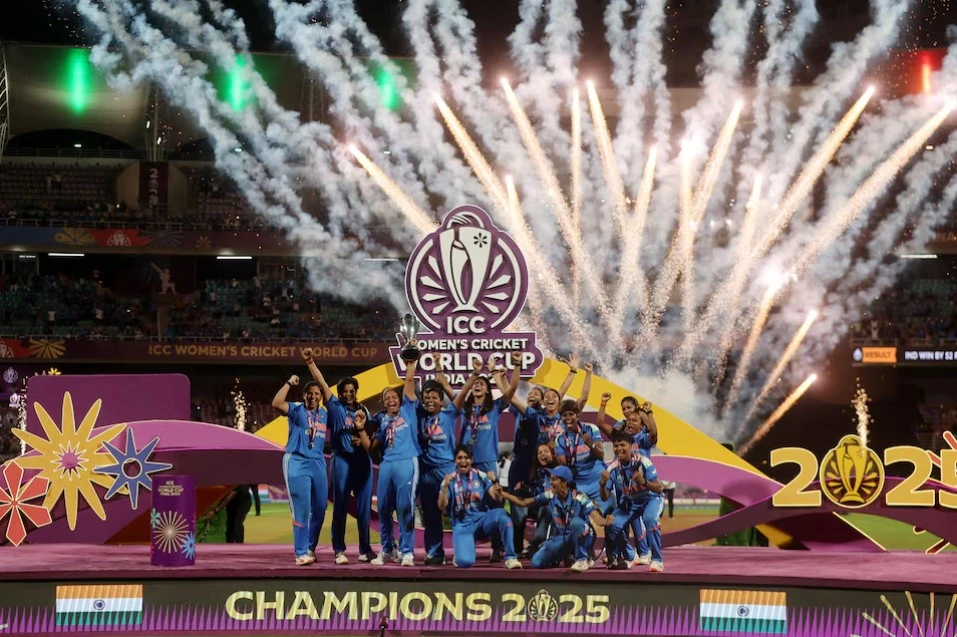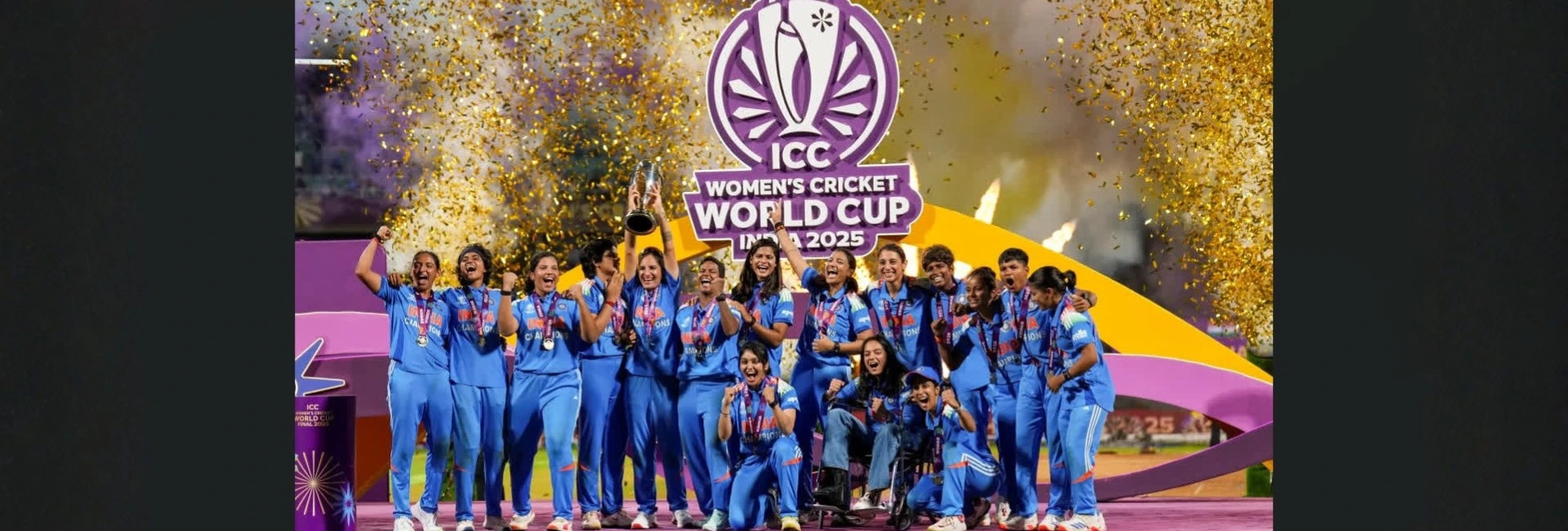(November 4, 2025) From modest beginnings in the 1970s to a roaring triumph in 2025, India’s Women in Blue have transformed cricketing glory. Their maiden World Cup is a victory that echoes the spirit of 1983.
When the Indian women’s cricket team lifted the 2025 ICC Women’s World Cup trophy at Navi Mumbai’s DY Patil Stadium, the moment felt like history repeating itself but in a long-overdue new chapter. In 1983, Kapil Dev’s men transformed Indian sport by winning the country’s first Cricket World Cup; four decades later, Harmanpreet Kaur’s women have done the same.

Their journey began in the 1970s, when the Women’s Cricket Association of India (WCAI) was formed and a handful of pioneers took the field and hand-me-down kits, often without crowd support or financial backing. From those early struggles to the bright floodlights of Navi Mumbai in 2025, where India stood tall as world champions, this win represents a sporting triumph, and marks the culmination of 50 years of persistence and reinvention. If 1983 turned cricket into India’s national passion, 2025 might just turn it into a symbol of equality.
A triumph years in the making
India’s 52-run victory over South Africa was a culmination of years of near-misses, heartbreaks, and relentless ambition. The defining moment, though, came earlier in the semi-final against Australia. Facing the defending champions, Jemimah Rodrigues produced an innings for the ages. Her unbeaten 127 powered India to a stunning victory, edging out Australia and securing a historic first-ever spot in the World Cup final.
At the DY Patil Stadium, the Women in Blue held their nerve once more. With Deepti Sharma and Radha Yadav weaving their spin magic and Harmanpreet Kaur anchoring the innings with a composed 50, India sealed a title that had eluded them for decades. The roar that erupted across the stands and across the country was for validation, for recognition, and for arrival.
And when Harmanpreet spoke at the post-match presentation, her words captured both relief and resolve: “This is the start. We wanted to break this barrier. And our next plan is to make this a habit. We were waiting for it, now this moment has come. So many big occasions are coming, and we want to keep improving. This is not the end, just the beginning,” the skipper said.
From humble beginnings to global stage
Women’s cricket in India began with little fanfare. The Women’s Cricket Association of India (WCAI), formed in 1973, laid the groundwork for a sport that few thought had a future. Three years later, on October 31, 1976, India played its first Test match against the West Indies in Bangalore. It was a modest draw that nonetheless marked a breakthrough. Under Shantha Rangaswamy, India claimed its first Test victory in 1978, defeating the same opposition in Patna.
In those early years, players juggled careers, studies, and family expectations, often travelling in unreserved train compartments and sharing kits. Yet, through determination and camaraderie, they built a foundation strong enough for later generations to stand upon. Icons like Mithali Raj and Jhulan Goswami turned the team into global contenders, taking India to World Cup finals in 2005 and 2017. There were heartbreaks that paved the way for glory in 2025.

Indian Women’ s Cricket team in 1970s
The rise of a fearless generation
By the 2020s, a new India which was younger, bolder, and more confident began to emerge on the cricket field. The merger of the WCAI with the BCCI in 2006 provided institutional support, while the launch of the Women’s Premier League (WPL) brought exposure and professional structure. The results were swift: a gold medal at the 2022 Asian Games, a T20I series win in England in 2025, and finally, the World Cup crown.
Today, under Harmanpreet Kaur and Smriti Mandhana, India’s women’s team stands ranked among the top three globally across formats. It is a sign of skill and depth. With players like Shafali Verma, Deepti Sharma, and Richa Ghosh bringing an aggressive, contemporary flair, this generation plays with an unflinching belief that they belong at the very top.
A victory rewarded and recognized
The magnitude of India’s 2025 win was matched by the recognition it received. The BCCI announced a ₹51 crore reward for players, coaches, and staff, while the ICC’s prize purse of USD 4.48 million (₹39.78 crore) was the highest ever for a cricket World Cup.
BCCI Secretary Devajit Saikia reflected the national mood, remarking, “In 1983, Kapil Dev brought about a new era in Indian cricket by winning the World Cup. The same excitement and encouragement have now been introduced by the women. Harmanpreet Kaur and her team have not just won the trophy, they’ve won the hearts of all Indians.” Beyond the figures lies the long-overdue mainstreaming of women’s cricket in the public imagination. The stands are fuller, the sponsors more eager, and the young girls more inspired.

Beyond the trophy
The 2025 triumph seems to be a launchpad. Its true legacy will unfold in the years to come, in every academy that opens its doors wider to girls, in every parent who sees cricket as a viable dream for their daughters, and in every schoolyard where the sound of leather on willow echoes with new meaning.
If 1983 created a cricket-obsessed nation, 2025 might create a cricket-equal nation. The Women in Blue have done more than win. They have reformulated what victory looks like in India. And as Harmanpreet Kaur said, this is not the end. It is, unmistakably, just the beginning.



